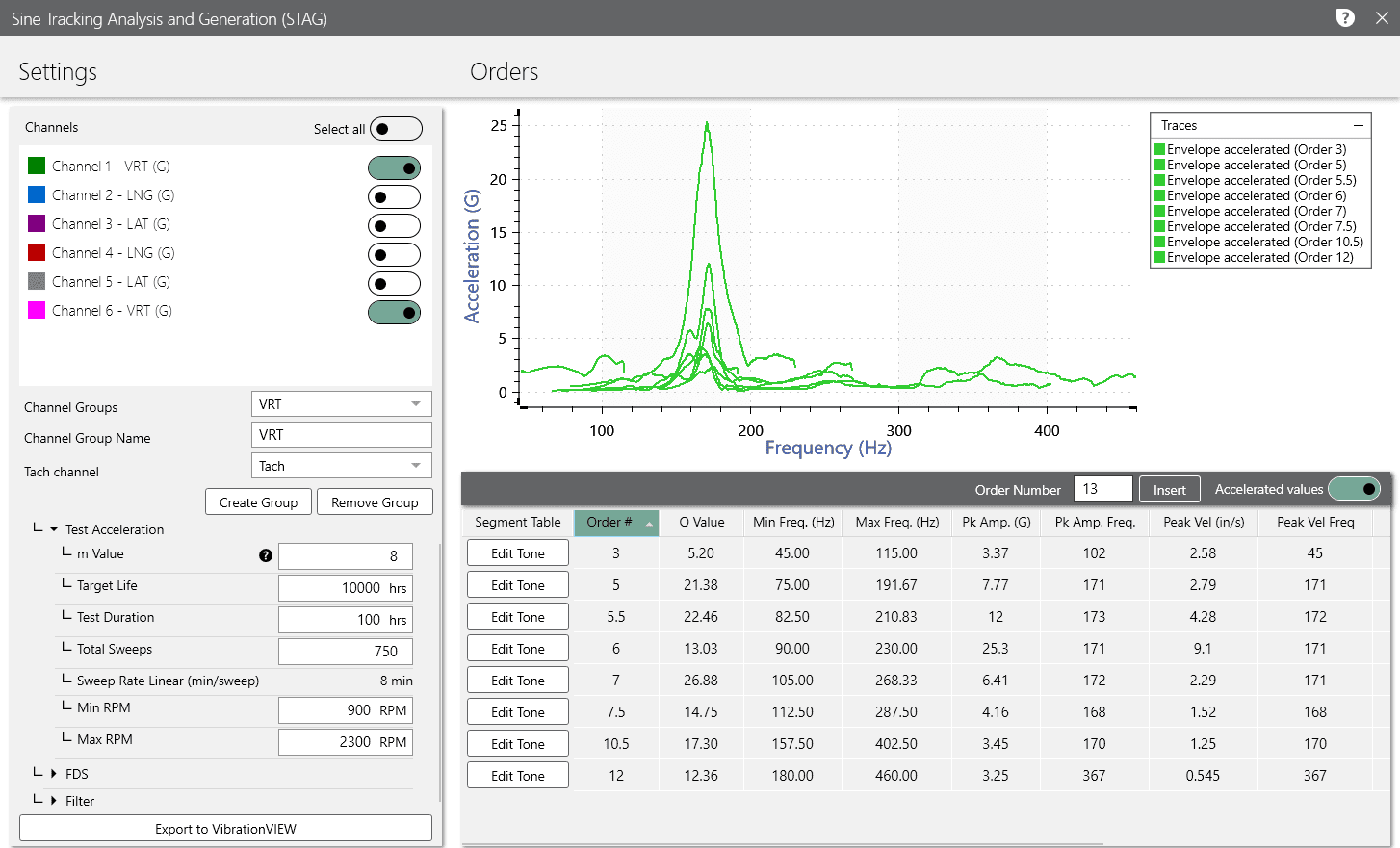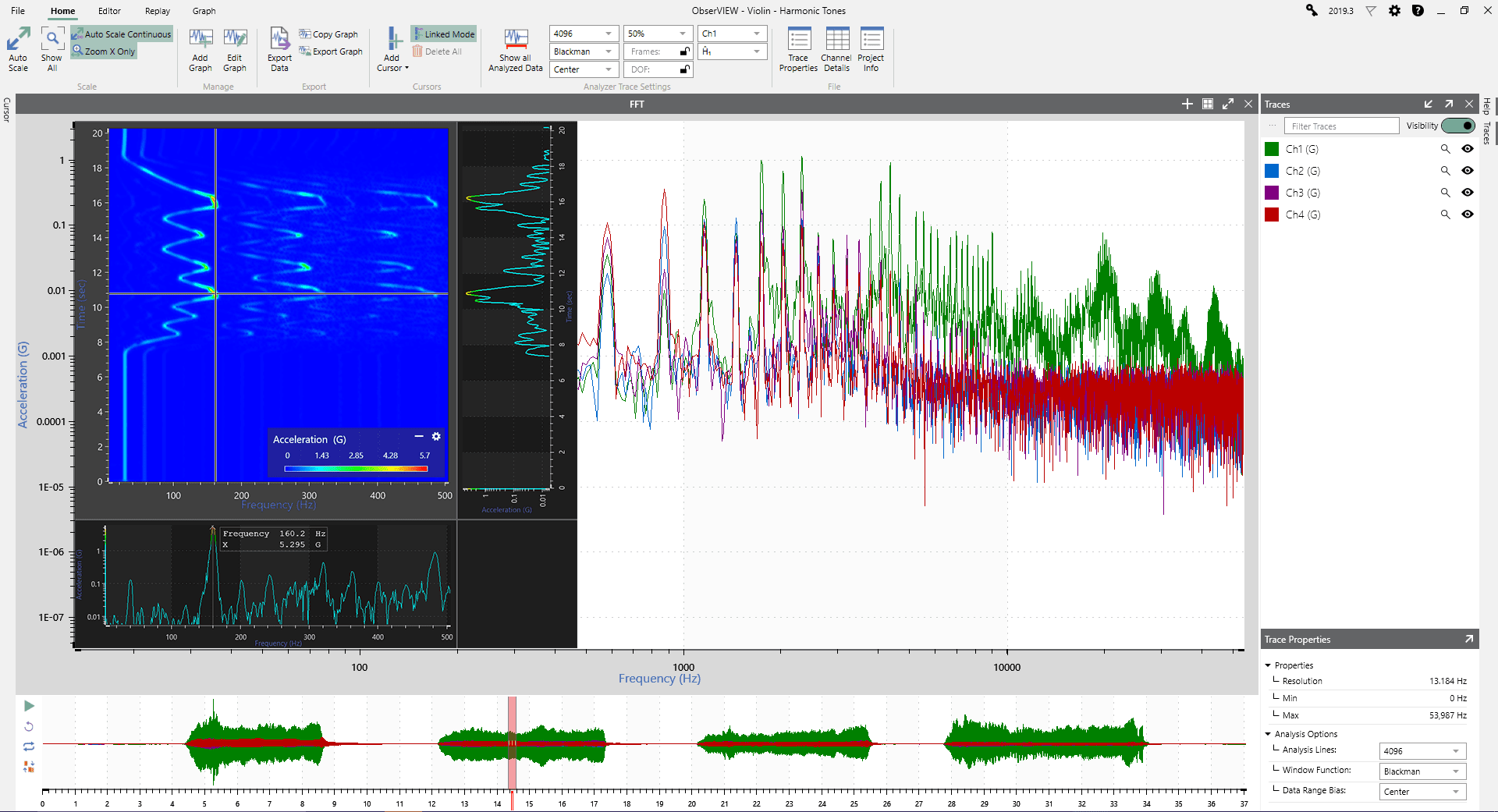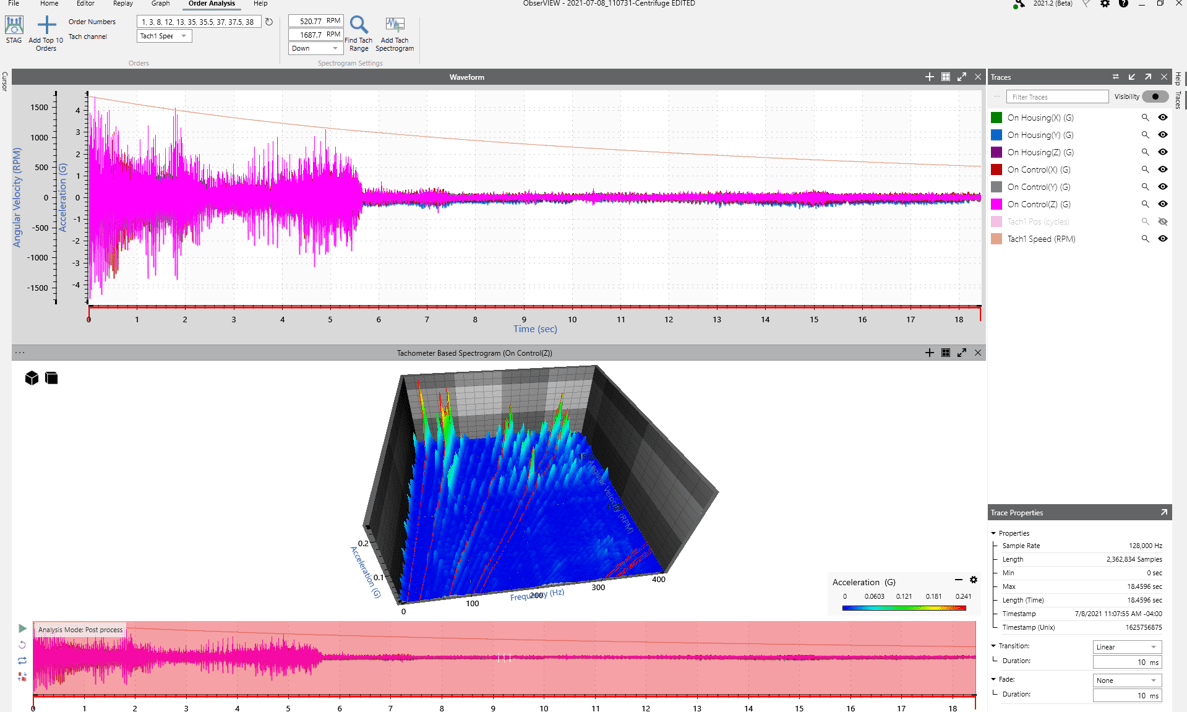Automotive manufacturers depend on noise, vibration, and harshness (NVH) testing to optimize vehicle performance and maintain a standard of comfort across their vehicle catalog. The ObserVIEW software delivers several of the necessary tools for this type of testing, including:
- Analyzing frequency domain data with FFT analysis
- Order analysis and test development for rotational equipment
- Identifying responses to input with modal testing
- Filtering acoustic signals with octave analysis
Most manufacturers are known for a certain standard of comfort. Passengers not only appreciate a quiet and smooth ride but have come to expect such. NVH testing is a critical step to increasing consumer confidence.
Sound and Vibration Measurement
NVH testing often occurs during the assembly of a vehicle but can encompass the complete construction, an individual component, or anywhere in between. NVH solutions identify and address vehicle noise and vibration, and many international standards require some variation of this type of testing.
FFT Analysis
In a complex signal, the FFT helps the engineer determine which frequencies are excited and the amplitude at each frequency. Additionally, it highlights changes in the frequency and amplitude and the harmonic excitation in a frequency range.
For automotive testing, engineers can use the FFT to diagnose imbalances and analyze vibration from the engine or other components. To learn more about FFT analysis, visit the blog titled Fast Fourier Transform (FFT) Analysis.
If the vibration frequency changes with time, the user can select a spectrogram as the graph option. The testing engineer can use a spectrogram to analyze the waveform’s frequency content to distinguish different vibration types. The data lets users locate strong signals and determine how frequencies change over time.
The spectrogram is very useful for determining the amplitude of the sinusoidal motion generated by the rotational vibration source compared to the general random vibration and other motions. It also allows the user to view product resonances that are excited throughout the test. In ObserVIEW, the user can add additional cross-section plots to view the specific data for a vertical segment, horizontal segment, or order.
Octave Band Analysis
Octave analysis allows for the objective evaluation of sound and vibration by grouping the frequencies of an acoustic signal into “bins,” often to reflect how humans perceive the frequency spectrum.
The Octave Analysis software in ObserVIEW can perform A, C, and Z frequency weighting, linear and exponential averaging, and peak hold. ObserVIEW includes the most used fractional octave bands and supports up to 1/24 octave bandwidth. The octave band graph supports the advanced functionalities of ObserVIEW, including live analysis, copy-and-paste, and graph traces.
Vibration Research’s data acquisition systems offer the functionality to acquire and analyze acoustic signals. All VR hardware includes a BNC input that supports a microphone and is capable of data acquisition. If your testing lab is already using VR hardware for vibration testing, sound acquisition and analysis are an economical addition.

Order Tracking and Analysis
An order is a frequency value that is a multiple of a reference rotational speed. Order analysis captures the reference RPM signal and correlates it with the measured vibration on the rotational equipment. Frequencies corresponding to the reference RPM and its harmonics are identified as orders. As the reference RPM changes, so will the response amplitude and frequency.
Order tracking monitors the change in RPM throughout a waveform. By generating graphs with this information, engineers can understand the vibration source at different frequencies and its relation to the reference RPM.
Among other purposes, order analysis determines which part of the vibration is generated from the rotational source compared to some random source. The frequency and amplitude values that follow the order lines are easily differentiated from vibration content not generated by the rotational source.
ObserVIEW can extract orders of interest automatically. The rotational content is separated from the background random. Then, a tracking filter completes an order analysis of the rotational environment. Using time- and order-based spectrograms, the user can analyze and manipulate the data.
Next, the user can employ the Sine Tracking, Analysis and Generation (STAG) software. STAG identifies the dominant orders and extracts them from the original recording with the purpose of generating an accelerated sine-on-random test that is the damage equivalent to the field environment.
Test Development with STAG
VR developed STAG to generate an accurate representation of an environment with dominant sinusoidal vibration and background random vibration, such as an engine environment. Access to STAG enables users to analyze, accelerate, and generate a test representative of environments with a dominant sinusoidal or rotational component.

A sine-on-random (SoR) test is the most accurate test method for replicating an environment with rotational components. However, there is no standard method of SoR test development, and the process of generating and accelerating both sine and random test profiles can be time-consuming and prone to error. STAG is an accurate and efficient option for SoR test development using recorded data.
STAG uses recorded time data from an engine run-up or coast down to generate the sinusoidal portion of the SoR test. Then, the data are exported to VibrationVIEW, where the random test profiles are generated and accelerated with the fatigue damage spectrum (FDS). Together, the sinusoidal and random test profiles constitute an accelerated SoR test that is the damage equivalent to the original environment.
VRU Course: Test Development with Recorded Data
Acquire Field Data with VR Mobile: Autonomous DAQ System
Autonomous data collection is imperative when recording field data for analysis. The user can control the lightweight and portable ObserVR1000 hardware with the VR Mobile application, which runs on a smartphone or tablet using a Wi-Fi connection. A vibration test can be set up, monitored, and modified in the field without a wired configuration, delivering flexibility and simplicity for field tests.
The user can set up an event trigger on vehicle startup, G-levels, transient events, and more. They can also record time reference and location data automatically during signal recording.

What is the importance of NVH Testing?
Noise, vibration, and harshness (NVH) testing:
- Optimizes vehicle noise and vibration
- Improves vehicle performance and safety
- Maintains a standard of comfort
- Increases consumer confidence
With VR systems, there’s no need to own multiple pieces of equipment. Use our hardware and software as the all-in-one solution for NVH testing. Interested in learning more? Download the free demo of ObserVIEW and put the software to the test!


